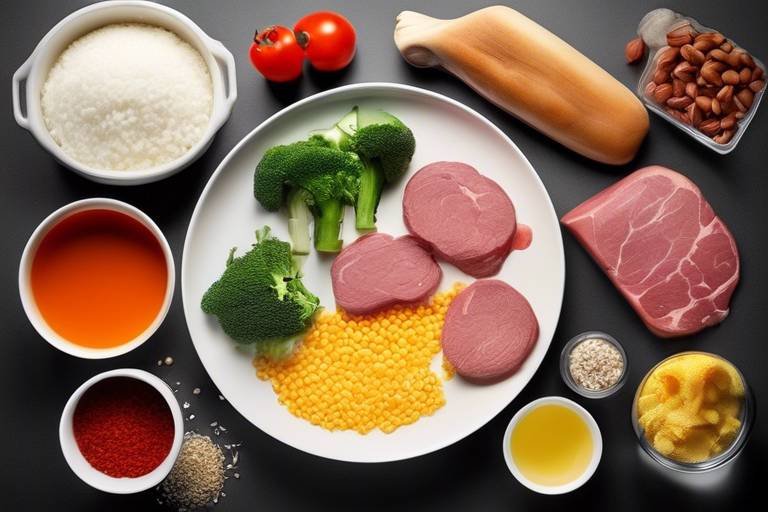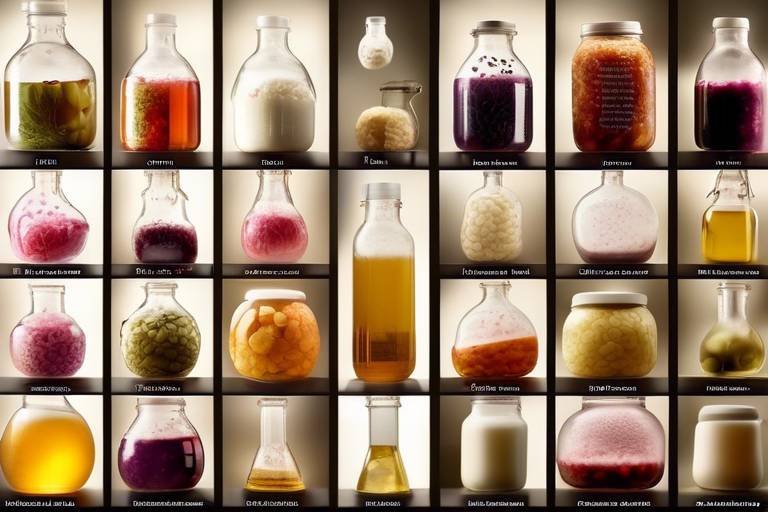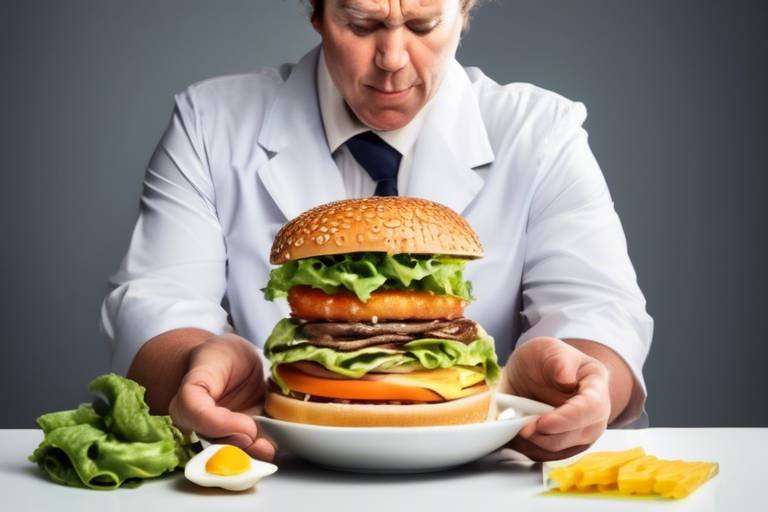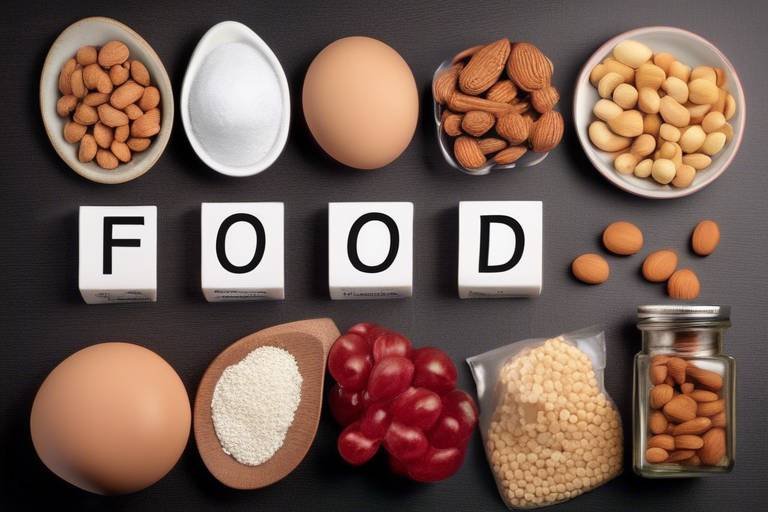How Cooking Methods Impact Nutritional Value - The Science
Cooking is an art, but it’s also a science, especially when it comes to the nutritional value of our food. Have you ever wondered how the way you prepare your meals can affect the vitamins and minerals they contain? It turns out, the cooking method you choose plays a crucial role in determining how much nutrition you actually get from your food. From boiling to grilling, each technique has its own unique impact on nutrient retention, and understanding these effects can help you make healthier choices in the kitchen.
Nutritional value refers to the content of essential nutrients in food that our bodies need to function optimally. These nutrients include vitamins, minerals, proteins, carbohydrates, and fats. But not all cooking methods treat these nutrients the same way. For instance, boiling vegetables might make them tender and palatable, but it can also leach out water-soluble vitamins like vitamin C and some B vitamins into the cooking water. On the other hand, methods like steaming or grilling can help retain more of these essential nutrients, making them a better choice for health-conscious cooks.
So, why does this matter? Well, maintaining the nutritional integrity of food can significantly influence our overall health. Consuming foods rich in essential nutrients supports everything from our immune system to our energy levels. If we’re not mindful of how we cook our food, we might be missing out on the very benefits we’re trying to obtain. It's like planting a garden and then forgetting to water it; you may not get the vibrant blooms you hoped for. Therefore, understanding the science behind cooking methods can empower you to make better decisions for your health and well-being.
In this article, we will explore various cooking methods, their effects on nutritional value, and practical tips to maximize nutrient retention. Whether you’re a seasoned chef or a home cook just starting out, this knowledge will help you enhance the health benefits of your meals. So, let’s dive into the fascinating world of cooking methods and discover how they can impact the nutritional value of the food we eat!
Before we delve into cooking methods, let’s clarify what we mean by nutritional value. Nutritional value is essentially a measure of the essential nutrients that food provides. These nutrients are critical for our bodies to function properly and are categorized into several groups:
- Vitamins: Organic compounds that are crucial for various bodily functions.
- Minerals: Inorganic elements that support processes such as bone health and metabolic function.
- Proteins: Building blocks for muscles, tissues, and enzymes.
- Carbohydrates: The body’s primary source of energy.
- Fats: Essential for hormone production and nutrient absorption.
Each of these components plays a vital role in maintaining health, and their presence in our diet can either enhance or hinder our well-being. By understanding how different cooking methods affect these nutrients, we can make informed choices to optimize our meals.
Now that we have a grasp of nutritional value, let’s look at some common cooking methods and their general impact on nutrition. Here’s a quick overview:
| Cooking Method | Nutritional Impact |
|---|---|
| Boiling | Can lead to significant nutrient loss, especially of water-soluble vitamins. |
| Steaming | Retains more nutrients compared to boiling and frying. |
| Frying | Enhances flavor but may introduce unhealthy fats and reduce nutrient content. |
| Baking | Generally retains nutrients well, especially when using whole ingredients. |
Each method has its pros and cons, and understanding these can help you choose the best way to prepare your food for maximum health benefits. So, which method will you choose next time you're in the kitchen?
1. Does boiling vegetables destroy all their nutrients?
While boiling does lead to nutrient loss, especially of water-soluble vitamins, not all nutrients are destroyed. Using minimal water and shorter cooking times can help preserve some nutrients.
2. Is steaming the best cooking method?
Steaming is often considered one of the healthiest cooking methods because it retains more nutrients compared to boiling and frying. It's a great option for vegetables and fish.
3. Can frying be healthy?
Frying can be less healthy due to the addition of fats, but using healthier oils and techniques, such as air frying, can make it a better option.
4. What about microwaving?
Microwaving is a quick cooking method that can preserve nutrients well, especially when using minimal water. It’s a convenient option for busy lifestyles.

Understanding Nutritional Value
Nutritional value refers to the content of essential nutrients in food, which can significantly influence our overall health and well-being. When we talk about nutrition, we often think of vitamins, minerals, proteins, fats, and carbohydrates. These components work together to provide energy, support bodily functions, and maintain our health. Understanding the nutritional value of the food we consume is crucial because it helps us make informed choices about our diets.
At its core, nutritional value is about how food contributes to our body's needs. For instance, proteins are the building blocks of our cells, while carbohydrates provide the energy we need to stay active. On the other hand, fats play a vital role in hormone production and nutrient absorption. Additionally, vitamins and minerals are essential for various bodily functions, from supporting the immune system to aiding in the healing process.
Let’s break down these key components a bit further:
- Proteins: Found in meat, dairy, legumes, and nuts, proteins are essential for muscle repair and growth.
- Carbohydrates: Found in grains, fruits, and vegetables, they are the primary energy source for our bodies.
- Fats: Healthy fats, such as those found in avocados and olive oil, are crucial for brain health and hormone regulation.
- Vitamins: These are organic compounds that our bodies need in small amounts, such as Vitamin C for immune function.
- Minerals: Inorganic elements like calcium and iron are vital for bone health and oxygen transport in the blood.
Why does this matter? Because the way we prepare our food can greatly affect the nutritional value. For example, cooking methods can lead to nutrient loss or enhancement. This is why understanding the nutritional content of food is not just about what we eat, but also how we cook it. A dish that seems healthy might lose its benefits if prepared using methods that destroy essential nutrients.
Moreover, the concept of bioavailability comes into play. This term refers to how well our bodies can absorb and utilize the nutrients from food. Some cooking methods can actually increase the bioavailability of certain nutrients. For instance, cooking tomatoes increases the availability of lycopene, a powerful antioxidant. Conversely, boiling vegetables can cause water-soluble vitamins to leach into the cooking water, reducing their benefits.
In summary, understanding nutritional value is essential for making healthy food choices. It empowers us to select foods that not only taste good but also nourish our bodies effectively. As we dive deeper into various cooking methods in this article, keep in mind how each technique may alter the nutritional profile of the foods we love.
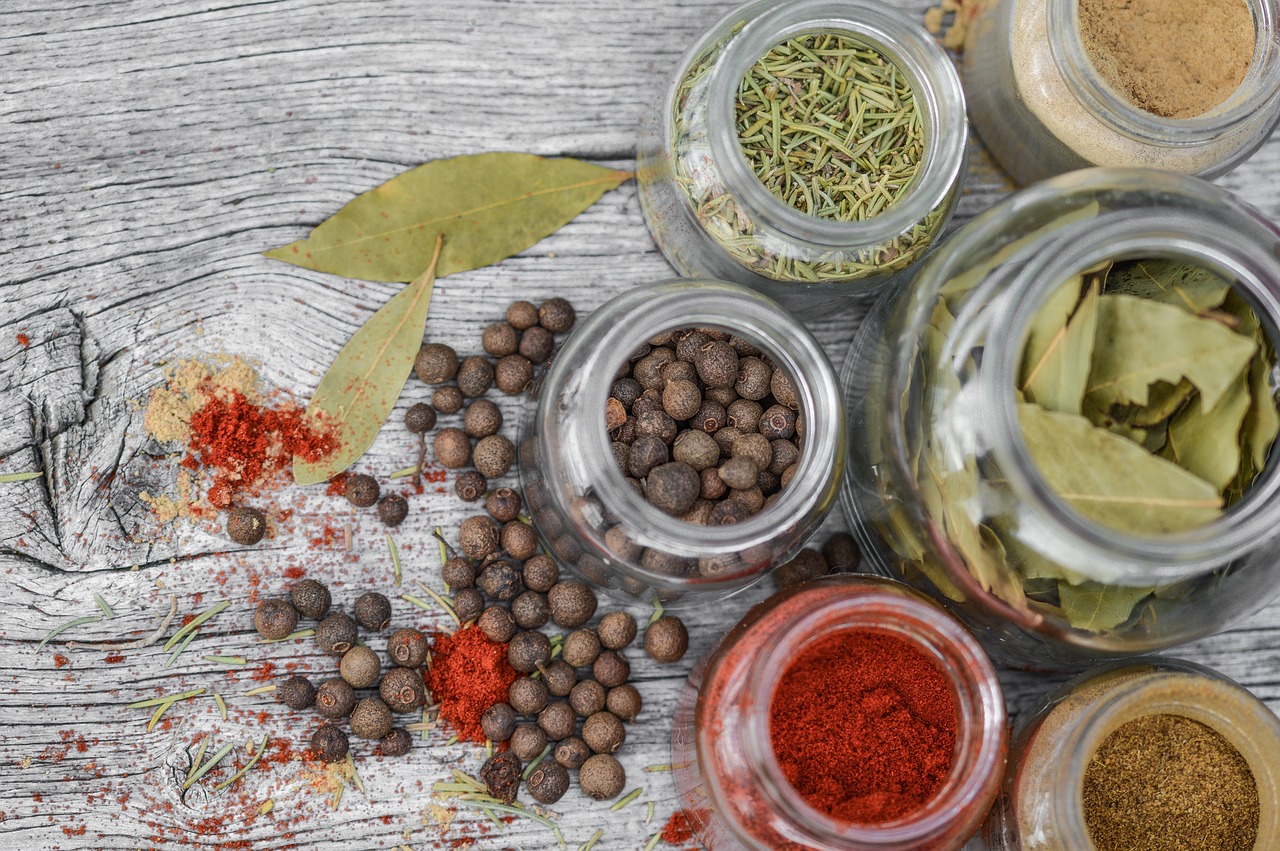
Cooking Methods Overview
When it comes to cooking, the method you choose plays a crucial role in determining not only the flavor of your dish but also its nutritional value. Different cooking techniques can lead to varying levels of nutrient retention, which is essential for maintaining a healthy diet. It’s fascinating to consider how something as simple as the way you prepare your food can impact its health benefits. For instance, some methods can preserve vitamins and minerals, while others may lead to significant losses. Understanding these effects can help you make informed decisions in the kitchen.
Let’s break down some of the most common cooking methods and their general impact on nutrition:
| Cooking Method | Nutritional Impact | Best For |
|---|---|---|
| Boiling | Can lead to loss of water-soluble vitamins | Soups, pasta |
| Steaming | Preserves most nutrients | Vegetables, seafood |
| Frying | Can add unhealthy fats, but enhances flavor | Meats, potatoes |
| Baking | Generally retains nutrients, but can dry out food | Meats, breads |
As you can see from the table above, each method has its strengths and weaknesses. For example, while boiling is simple and quick, it often leaches out vital nutrients into the cooking water. On the other hand, steaming is a fantastic option for retaining nutrients, making it a go-to method for health-conscious cooks. It’s like the difference between a sponge soaking up water and one that’s been wrung out—one retains more, while the other loses its essence.
Frying, on the other hand, can be a double-edged sword. It adds flavor, but it may also introduce unhealthy fats, especially if you’re using oils that are high in trans fats. However, there are healthier frying options available, such as using air fryers or opting for healthier oils like olive oil. Baking is another method that can be nutrient-friendly, provided you keep an eye on cooking times to prevent drying out your food.
In summary, the method you choose can significantly impact your food's nutritional profile. By understanding these cooking techniques, you can better navigate your culinary choices and enhance the health benefits of your meals. So, the next time you're in the kitchen, think about how you can make your cooking methods work for you!

Boiling and Nutrient Loss
Boiling is a cooking method that many of us use without a second thought. It’s quick, convenient, and often results in tender food. However, have you ever considered what happens to the nutrients during this process? When food is submerged in water and heated, certain vital nutrients, particularly water-soluble vitamins like vitamin C and the B vitamins, can leach out into the boiling water. This means that the very essence of what makes our food nutritious can be lost, leaving us with a meal that might taste good but lacks its full health benefits.
Research has shown that boiling can lead to significant nutrient loss. For example, boiling vegetables can result in a loss of up to 50% of vitamin C and a substantial reduction in B vitamins. This is particularly concerning when we consider the importance of these vitamins in our daily diets. They play crucial roles in energy production, immune function, and overall health. So, while boiling might be a quick way to prepare meals, it’s essential to be aware of the potential downsides.
To illustrate the impact of boiling on nutrient retention, here’s a quick comparison of nutrient loss in different cooking methods:
| Cooking Method | Vitamin C Retention (%) | B Vitamins Retention (%) |
|---|---|---|
| Boiling | 50% | 40% |
| Steaming | 70% | 60% |
| Microwaving | 80% | 70% |
As seen in the table, steaming and microwaving are far better alternatives for preserving nutrients. This brings us to an important question: how can we minimize nutrient loss when we do choose to boil? Here are a few best practices:
- Use minimal water: The less water you use, the less nutrient loss you’ll experience.
- Reduce cooking time: The quicker you cook, the better you can retain nutrients.
- Use the leftover water: If you do boil vegetables, consider using the leftover water in soups or gravies to reclaim some of the lost nutrients.
In conclusion, while boiling is a common cooking method, it’s essential to be mindful of its effects on nutrient retention. By employing some simple strategies, we can enjoy our favorite boiled dishes while maximizing their health benefits. Remember, the goal is to nourish our bodies, and understanding how cooking methods impact our food is a step in the right direction.

Best Practices for Boiling
When it comes to boiling, many of us might think it's a straightforward process—just toss your veggies in a pot of water and wait for them to soften. However, if you're looking to retain as many nutrients as possible, there are some best practices you should consider. First off, the amount of water you use can make a significant difference. The more water you use, the more nutrients can leach out into the water. To minimize this loss, try using just enough water to cover the food. This way, you’ll cut down on the nutrient drain while still cooking your food thoroughly.
Another crucial factor is cooking time. Overcooking can lead to a dramatic reduction in nutrient content, especially for delicate vitamins like vitamin C and several B vitamins. Aim for a cooking time that allows your food to be tender but still vibrant. A good rule of thumb is to check for doneness a few minutes before the recommended cooking time. You can always cook it a bit longer if needed, but once those nutrients are gone, they're gone for good!
Additionally, consider the temperature at which you boil your food. A rolling boil can be too harsh for some vegetables, leading to nutrient loss. Instead, opt for a gentle simmer. This not only helps preserve the nutrients but also enhances the flavors of your food. And remember, if you’re boiling vegetables, don’t throw away that water! Instead, use it as a base for soups or sauces to capture any nutrients that may have escaped.
Lastly, if you’re boiling food that you plan to serve cold—like pasta or potatoes—try to cool them quickly after boiling. This can help prevent further nutrient loss and maintain the texture you desire. You can do this by running cold water over them or placing them in an ice bath. Not only does this technique help with nutrient retention, but it also keeps your food looking and tasting fresh.
In summary, here are some quick tips to keep in mind when boiling:
- Use minimal water to cover the food.
- Keep an eye on cooking times to avoid overcooking.
- Opt for a gentle simmer instead of a rolling boil.
- Reuse boiling water in other dishes to capture lost nutrients.
- Cool boiled food quickly if serving it cold.
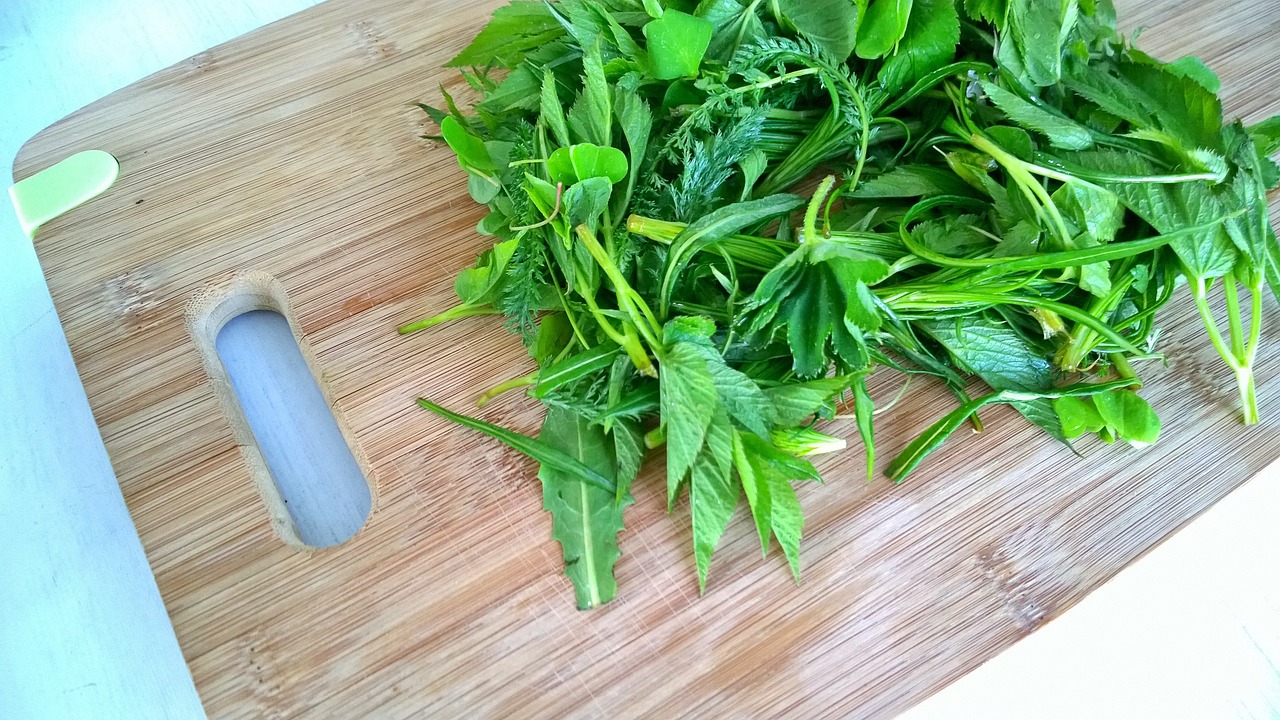
Alternatives to Boiling
While boiling is a common cooking method, it often leads to the loss of valuable nutrients, especially those that are water-soluble, such as vitamin C and some B vitamins. Fortunately, there are several alternative cooking methods that not only preserve the nutritional integrity of food but also enhance its flavor and texture. Let's dive into some of these methods and discover how they can transform your meals while keeping them healthy.
One of the most popular alternatives is steaming. This method involves cooking food using steam, which helps to retain vitamins and minerals that are typically lost during boiling. Steaming is particularly effective for vegetables, as it allows them to cook quickly while maintaining their vibrant colors and crisp textures. In fact, studies have shown that steaming can preserve up to 90% of nutrients compared to boiling. To steam effectively, consider using a bamboo steamer or a steaming basket placed over boiling water, ensuring the food is not submerged.
Another excellent option is microwaving. Many people might underestimate the microwave as a healthy cooking tool, but it can actually be one of the best ways to preserve nutrients. The quick cooking time and minimal water usage mean that fewer nutrients are lost. For instance, when microwaving vegetables, you can simply place them in a microwave-safe dish with a small amount of water, cover them, and cook on high for just a few minutes. This method is not only convenient but also energy-efficient!
Roasting is yet another alternative that can bring out the natural flavors of food while retaining nutrients. This method involves cooking food in an oven at high temperatures, which caramelizes the sugars in vegetables, enhancing their taste. Roasting is particularly great for root vegetables like carrots and sweet potatoes, as it allows them to develop a sweet, rich flavor without sacrificing nutritional value. Just toss them with a bit of olive oil and your favorite herbs, and roast until tender.
Lastly, consider sautéing. This method uses a small amount of oil to cook food quickly over high heat. Sautéing is perfect for vegetables, as it allows them to retain their crunch and color while cooking them just enough to enhance their flavor. Plus, when you sauté with healthy oils, like olive or avocado oil, you can add beneficial fats to your meal, which can help with the absorption of fat-soluble vitamins like A, D, E, and K.
In summary, while boiling may be a quick and easy cooking method, it’s not the only option available. By exploring alternatives like steaming, microwaving, roasting, and sautéing, you can ensure that your meals are not only delicious but also packed with the nutrients your body needs. So, the next time you're in the kitchen, think outside the pot and try one of these methods to keep your food healthy and flavorful!
- What is the healthiest cooking method? Steaming is often considered the healthiest cooking method as it preserves the most nutrients.
- Does microwaving destroy nutrients? No, microwaving can actually preserve nutrients better than boiling due to its quick cooking time.
- Can I roast vegetables without losing nutrients? Yes, roasting helps to retain nutrients while enhancing the flavor of the vegetables.
- Is sautéing a healthy cooking method? Yes, sautéing can be healthy, especially when using healthy oils and cooking vegetables quickly.
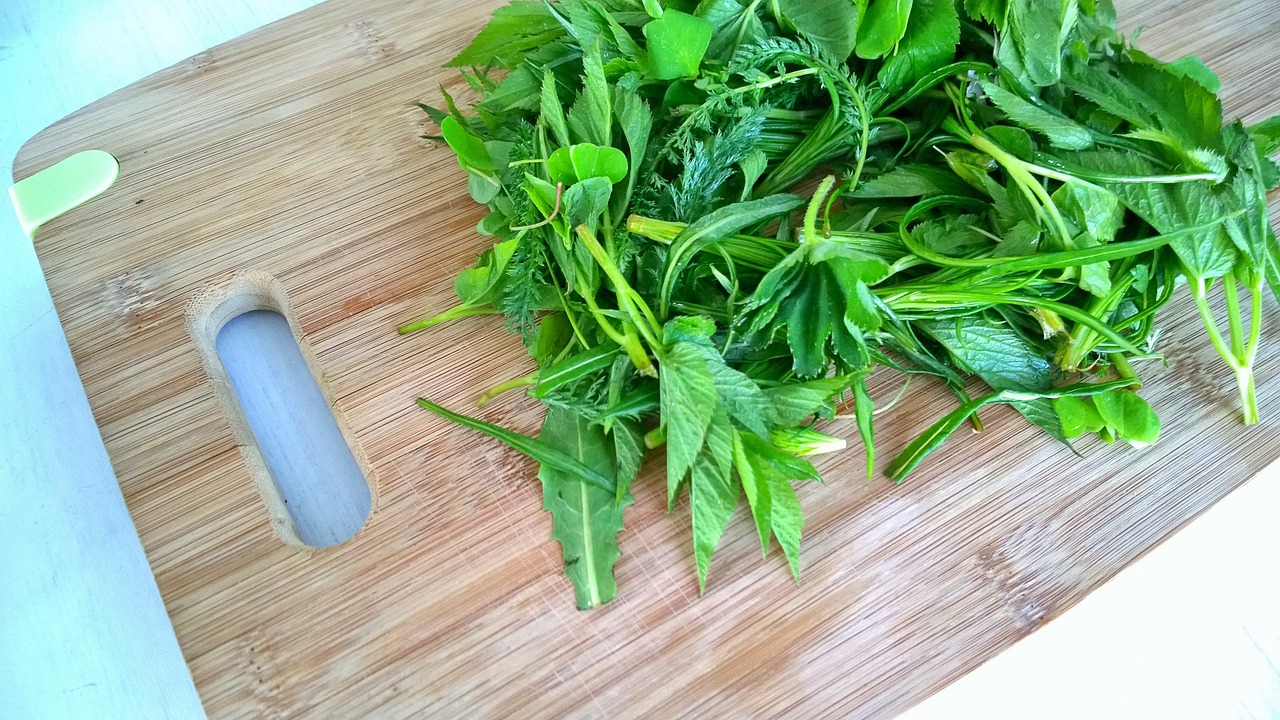
Frying and Its Nutritional Impact
Frying is a cooking method that many people love for its ability to create crispy, flavorful dishes. However, it's essential to understand that frying can significantly alter the nutritional profile of food. When you fry foods, especially at high temperatures, you're not just cooking; you're also introducing a variety of changes that can affect health.
One of the primary concerns with frying is the addition of unhealthy fats. Most frying methods, particularly deep frying, involve submerging food in oil, which can lead to a substantial increase in calorie content. For instance, a piece of fried chicken can contain almost double the calories of its baked counterpart. This happens because the oil seeps into the food, adding extra fat that can contribute to weight gain and other health issues if consumed in excess.
Moreover, frying can lead to the formation of harmful compounds. When oils are heated to high temperatures, they can break down and produce substances like acrylamide, which has been linked to cancer in animal studies. This underscores the importance of not only what you fry but also how you fry it. Choosing healthier oils, such as olive oil or avocado oil, can mitigate some of the risks associated with frying, as these oils have higher smoke points and contain beneficial nutrients.
Interestingly, frying can also have some nutritional benefits. For example, frying can enhance the absorption of certain fat-soluble vitamins, such as vitamins A, D, E, and K. This means that when you fry vegetables, the nutrients may become more bioavailable. However, the key is to balance this with the potential downsides of added calories and unhealthy fats. To achieve this balance, consider using the following tips:
- Opt for shallow frying instead of deep frying to reduce oil absorption.
- Use healthier oils with high smoke points.
- Limit frying to occasional treats rather than everyday meals.
In conclusion, while frying can enhance flavor and texture, it’s crucial to be mindful of its nutritional impact. By making informed choices about the type of oil and the method of frying, you can enjoy delicious fried foods without compromising your health. Remember, moderation is key, and pairing fried foods with nutrient-rich options like salads or steamed vegetables can help create a more balanced meal.
Q: Is frying food completely unhealthy?
A: Not necessarily! While frying can add unhealthy fats and calories, using healthier oils and frying methods can mitigate some of these effects. Moderation is also essential.
Q: What are the best oils to use for frying?
A: Oils with high smoke points, such as avocado oil, grapeseed oil, and peanut oil, are ideal for frying as they can withstand high temperatures without breaking down.
Q: Can frying vegetables be healthy?
A: Yes, frying vegetables can make certain nutrients more absorbable, but it’s important to use healthy oils and not overdo it. Pairing fried veggies with other healthy foods can also enhance overall nutrition.
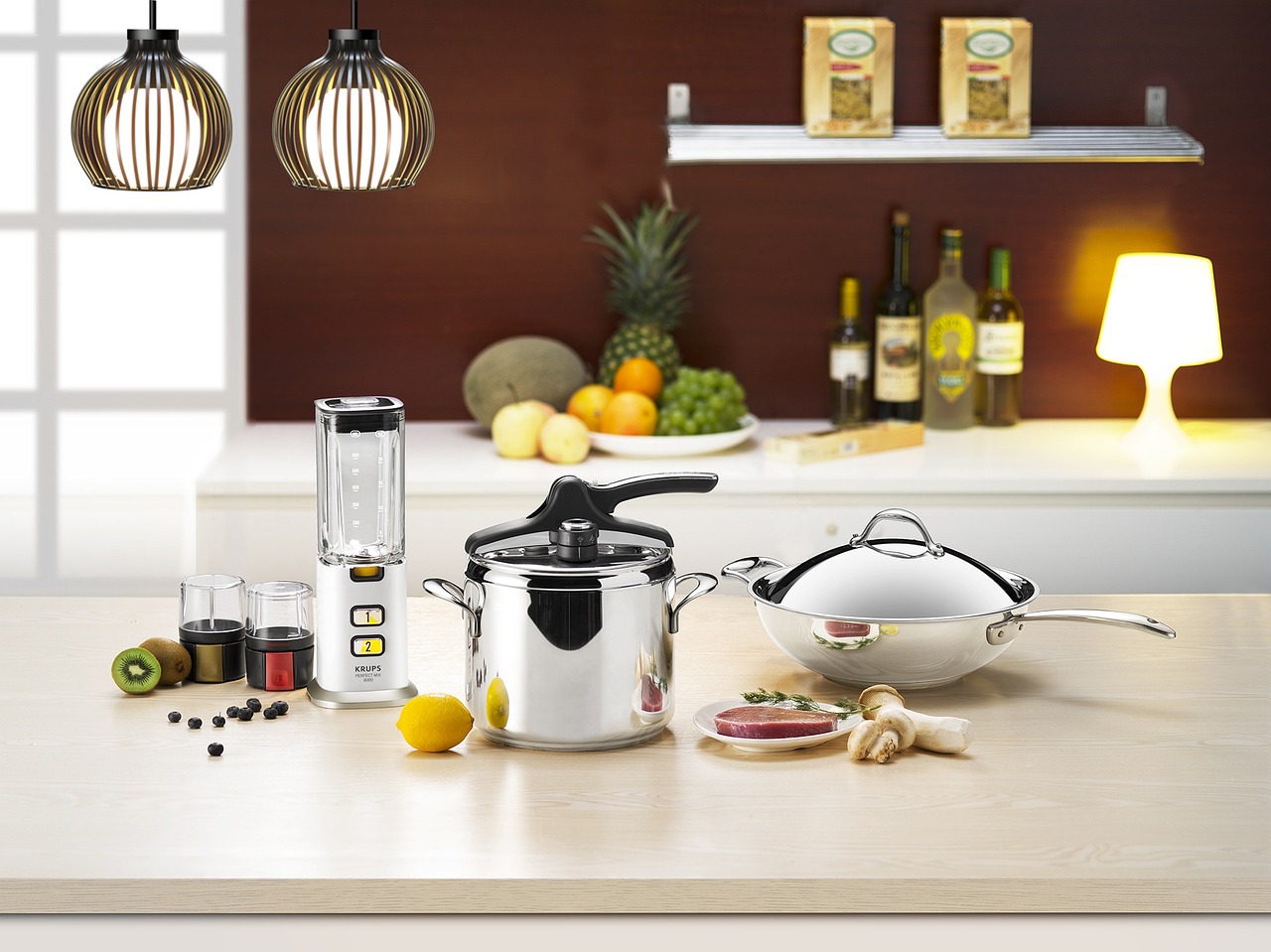
Steaming: A Healthier Option
When it comes to cooking methods, steaming is often heralded as one of the healthiest options available. Why? Well, steaming not only helps to preserve the vibrant colors and textures of vegetables, but it also maintains a significant portion of their essential nutrients. Unlike boiling, where water-soluble vitamins can leach out into the cooking water, steaming allows food to cook in its own moisture, ensuring that those precious nutrients remain intact. Imagine cooking a bright green broccoli floret; when you steam it, you’re essentially locking in all that green goodness!
One of the greatest benefits of steaming is its ability to retain vitamins and minerals that are crucial for our health. For instance, studies have shown that steaming can preserve up to 90% of vitamin C in vegetables. This is particularly significant because vitamin C is vital for immune function and skin health. So, if you’re looking to maximize the nutritional value of your meals, steaming should definitely be on your radar.
Moreover, steaming is incredibly versatile. You can steam a variety of foods, including vegetables, fish, and even some grains. The process is simple: just place your food in a steamer basket over boiling water, cover, and let the steam work its magic. It’s a quick and efficient way to prepare meals without the need for added fats or oils, making it an excellent choice for those looking to maintain a healthy diet.
To get the most out of your steaming experience, here are some tips:
- Use fresh produce: Fresh vegetables will have the highest nutrient content, so opt for seasonal and local options whenever possible.
- Cut evenly: Ensure that your food is cut into similar sizes to promote even cooking.
- Don’t overcook: Steaming should be done just until the food is tender-crisp; overcooking can lead to nutrient loss.
In addition to retaining nutrients, steaming can also enhance the natural flavors of food. When you steam vegetables, they become tender without losing their crunch, allowing you to enjoy their natural sweetness. This means you can savor the taste of your food without needing to smother it in sauces or seasonings, which often contain added sugars and unhealthy fats. Think of it as nature’s way of serving you a delicious dish!
In summary, steaming is a health-conscious cooking method that not only preserves nutrients but also enhances the flavors of your food. It’s a simple yet effective technique that can elevate your meals, making them both nutritious and delicious. So next time you’re in the kitchen, consider reaching for that steamer basket – your body will thank you!
1. How does steaming compare to other cooking methods in terms of nutrient retention?
Steaming generally retains more nutrients than boiling and frying. While boiling can lead to significant nutrient loss due to leaching into the water, steaming cooks food with minimal water, preserving vitamins and minerals.
2. Can I steam frozen vegetables?
Absolutely! Steaming frozen vegetables is a great option, as they are often flash-frozen soon after harvest, preserving their nutrients. Just adjust the steaming time accordingly.
3. What types of foods can I steam?
You can steam a wide variety of foods, including vegetables, fish, chicken, and even dumplings. Just ensure that the foods are cut to similar sizes for even cooking.
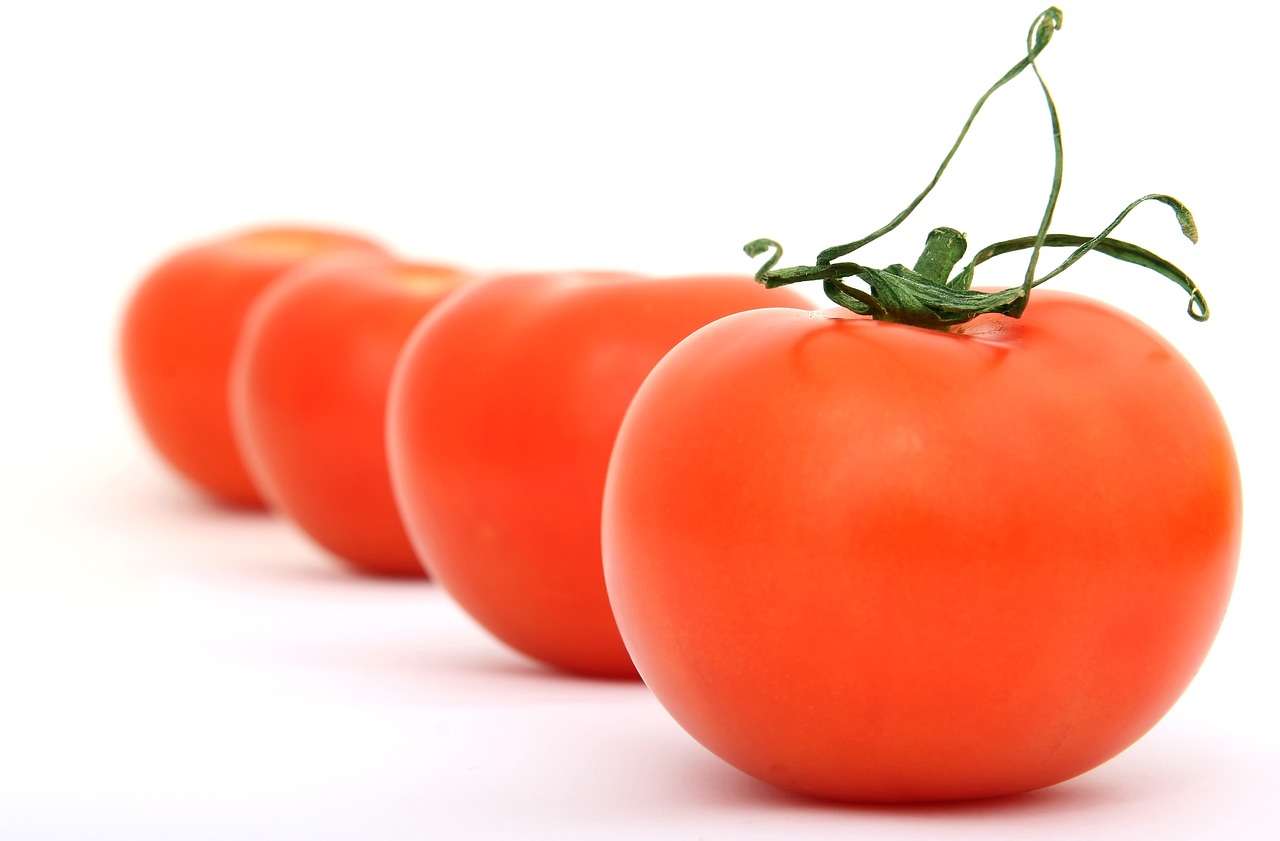
Vegetables and Steaming
When it comes to cooking vegetables, steaming is often heralded as one of the best methods for preserving their nutritional value. Unlike boiling, which can leach vitamins and minerals into the cooking water, steaming allows vegetables to retain much of their essential nutrients. This is primarily because the vegetables are cooked by the steam produced from boiling water, which means they are not submerged in water and thus experience less nutrient loss.
So, which vegetables benefit the most from steaming? Generally, those that are rich in water-soluble vitamins, such as vitamin C and certain B vitamins, are excellent candidates for this cooking method. For instance, leafy greens like spinach and kale, as well as cruciferous vegetables like broccoli and cauliflower, tend to retain their nutrients exceptionally well when steamed. In fact, studies have shown that steaming can preserve up to 90% of these vitamins, making it a top choice for health-conscious cooks.
To maximize the benefits of steaming, consider the following tips:
- Use a steamer basket: This allows the vegetables to cook evenly and prevents them from touching the water.
- Don’t overcook: A few minutes is often all it takes. Overcooking can lead to nutrient loss, so keep an eye on the clock!
- Cut vegetables uniformly: This ensures they cook at the same rate, preventing some from becoming mushy while others remain undercooked.
Additionally, it's important to note that steaming can enhance the flavor of vegetables without the need for excessive seasoning or fats. The natural flavors are intensified, making it easier to enjoy them as they are. This method also keeps the vibrant colors of the vegetables intact, which not only makes your plate look appealing but also indicates that the nutrients are preserved.
In summary, steaming is a fantastic way to prepare vegetables if you're looking to enhance their nutritional value while keeping them flavorful and visually appealing. It’s a win-win for your health and your taste buds!
Q: What vegetables are best for steaming?
A: Vegetables like broccoli, spinach, carrots, and green beans are excellent choices for steaming as they retain most of their nutrients.
Q: How long should I steam my vegetables?
A: The steaming time varies by vegetable. For most, 3 to 7 minutes is sufficient, but it’s best to check for tenderness.
Q: Can I steam frozen vegetables?
A: Yes, steaming frozen vegetables is a great option! They often retain their nutrients well, and you can steam them directly without thawing.
Q: Is steaming healthier than boiling?
A: Yes, steaming is generally healthier than boiling because it minimizes nutrient loss, especially for water-soluble vitamins.

Steaming vs. Other Methods
When it comes to cooking, the method you choose can dramatically influence the nutritional value of your food. Steaming, often hailed as one of the healthiest options, stands out when compared to other cooking techniques like boiling and frying. But why is that? Let's dive into the science behind it!
Steaming works by cooking food with the steam produced from boiling water, allowing it to retain its natural flavors and nutrients. This method is particularly effective for vegetables, which can lose a significant amount of their vitamins and minerals when subjected to high heat or prolonged cooking times. For instance, water-soluble vitamins such as Vitamin C and B vitamins are notorious for their sensitivity to heat and water. When you boil vegetables, these precious nutrients can leach into the cooking water, leading to a loss of nutritional value.
In contrast, steaming keeps those nutrients locked in. A study comparing the nutrient retention of steamed versus boiled broccoli found that steaming preserved up to 90% of its Vitamin C content, while boiling only retained about 60%. This stark difference highlights why steaming is often the preferred method for health-conscious individuals.
Now, let’s consider frying, a method that many people love for its ability to create crispy, flavorful dishes. However, frying often introduces unhealthy fats into the equation, which can detract from the overall health benefits of the food. Not only does frying add calories, but it can also lead to the formation of harmful compounds when oils are heated to high temperatures. This is where steaming truly shines as a healthier alternative. It allows you to enjoy the natural taste and texture of your food without the added calories and potential health risks associated with frying.
To put this into perspective, here’s a quick comparison of the nutrient retention in different cooking methods:
| Cooking Method | Nutrient Retention | Common Nutrients Affected |
|---|---|---|
| Steaming | Up to 90% | Vitamin C, B Vitamins |
| Boiling | 60% or less | Vitamin C, B Vitamins |
| Frying | Varies (often lower) | Fat-soluble Vitamins (A, D, E, K) |
As you can see from the table, steaming not only retains more nutrients but also allows you to enjoy your meals without the adverse effects of added fats. It's a win-win situation! Furthermore, steaming is incredibly versatile; you can steam almost any vegetable, and even some proteins, making it a practical choice for a wide array of dishes.
In summary, while all cooking methods have their place in the kitchen, steaming emerges as a clear champion when it comes to preserving the nutritional integrity of your food. The next time you're deciding how to prepare your vegetables or proteins, consider opting for steaming to maximize health benefits. After all, eating well doesn’t have to be complicated; sometimes, the simplest methods yield the best results!
- Is steaming better than boiling for all vegetables?
While steaming is generally better for nutrient retention, some vegetables may still benefit from boiling, especially starchy ones like potatoes. However, for most leafy greens and delicate vegetables, steaming is the way to go. - Can I steam food without a steamer?
Absolutely! You can use a microwave-safe bowl with a lid, a sieve over a pot of boiling water, or even a makeshift steamer using a colander. - Does steaming affect the taste of food?
Steaming preserves the natural flavors of food, so you’ll often find that the taste is more vibrant compared to boiling or frying.

Grilling: Flavor and Nutrition
Grilling is one of those cooking methods that not only tantalizes your taste buds but also manages to retain a significant amount of nutritional value in the food. Imagine sinking your teeth into a perfectly grilled steak or vegetables that are charred just right, releasing a symphony of flavors. But it’s not just about taste; grilling can actually be a healthier option compared to some other cooking methods. When you grill, the excess fats drip away, which can lead to lower calorie consumption, making it a win-win for flavor and nutrition.
One of the standout benefits of grilling is its ability to enhance the natural flavors of food without the need for heavy sauces or oils. This is particularly true for meats and vegetables. The high heat of the grill creates a caramelization effect, which not only adds depth to the flavor but also contributes to a delightful texture. Picture this: the crispy exterior of a grilled chicken breast, while the inside remains juicy and tender. It’s like a culinary hug for your taste buds!
When it comes to nutrition, grilling helps preserve essential vitamins and minerals. Unlike boiling, where nutrients can leach into the water, grilling keeps everything intact. Research has shown that grilling can maintain the integrity of nutrients like vitamins A and C in vegetables. For example, bell peppers and zucchini, when grilled, not only taste amazing but also retain a high percentage of their nutritional value. It’s like getting the best of both worlds!
However, it’s important to note that how you prepare your food before grilling can impact its healthiness. Marinating is a fantastic way to infuse flavor while also adding nutritional benefits. Marinades often contain ingredients like olive oil, vinegar, herbs, and spices, which can enhance the antioxidant content of your meal. For instance, a marinade made with lemon juice and garlic not only adds zest but also provides health benefits, such as boosting your immune system.
Here’s a quick look at some popular marinades and their benefits:
| Marinade | Main Ingredients | Health Benefits |
|---|---|---|
| Citrus Marinade | Lemon, lime, orange juice | Rich in vitamin C, boosts immunity |
| Herb Marinade | Olive oil, fresh herbs (like rosemary, thyme) | High in antioxidants, heart-healthy |
| Spicy Marinade | Chili powder, garlic, and vinegar | May boost metabolism, anti-inflammatory |
In conclusion, grilling is not just a cooking method; it’s an experience that combines flavor and nutrition. Whether you’re grilling meats, seafood, or vegetables, you’re likely to end up with a dish that’s both delicious and health-conscious. So, the next time you fire up the grill, remember that you’re not just cooking; you’re creating a meal that’s packed with flavor and nutrients!
- Is grilling healthier than frying? Yes, grilling generally allows excess fat to drip away, reducing calorie content.
- Can I grill vegetables? Absolutely! Grilling enhances the flavor and retains nutrients in vegetables.
- What are some good marinades for grilling? Citrus-based marinades, herb-infused oils, and spicy mixtures are great options.
- Does grilling affect the protein content in meat? No, grilling does not significantly affect the protein content, but it can enhance flavor.

Marinating for Nutritional Benefits
Marinating is more than just a way to add flavor to your food; it can also enhance the nutritional profile of your meals. When you marinate meats, vegetables, or even tofu, you’re not just soaking them in a flavorful liquid. You're also infusing them with a variety of nutrients that can boost your overall health. Think of marinating as a way to give your food a “nutritional upgrade.”
So, what exactly happens during the marination process? When you apply a marinade, usually made from ingredients like olive oil, vinegar, herbs, and spices, several things occur:
- Flavor Enhancement: The acids in marinades help break down proteins, making your food more tender and flavorful.
- Nutrient Absorption: Some marinades contain antioxidants and vitamins, which can be absorbed by the food, enriching its nutritional value.
- Reduced Harmful Compounds: Marinating meats can help reduce the formation of harmful compounds that might be produced during cooking.
For instance, a marinade rich in citrus juice not only adds a tangy flavor but also provides vitamin C, which is essential for a healthy immune system. Similarly, using herbs like rosemary or thyme can introduce antioxidants that combat oxidative stress in the body. It’s like giving your dish a health boost while also tantalizing your taste buds!
However, it’s important to choose your marinade wisely. Some store-bought marinades can be loaded with sugars and preservatives, which can negate the health benefits. Instead, consider making your own marinades using fresh ingredients. Here’s a simple recipe you can try:
| Ingredient | Benefits |
|---|---|
| Olive Oil | Rich in healthy fats and antioxidants. |
| Lemon Juice | High in vitamin C and helps tenderize meat. |
| Garlic | Contains compounds that boost the immune system. |
| Herbs (e.g., basil, rosemary) | Packed with antioxidants and anti-inflammatory properties. |
To maximize the nutritional benefits of marinating, aim to marinate your food for at least 30 minutes, but not more than 24 hours. This time frame allows the flavors to penetrate the food without compromising its texture. Also, remember that marinating isn't just for meat; vegetables can also benefit from a good soak in a tasty marinade. Grilled vegetables can be a delightful addition to any meal, bursting with flavor and nutrients!
In conclusion, marinating is a simple yet effective way to enhance both the taste and nutritional value of your meals. By selecting the right ingredients and allowing sufficient time for absorption, you can turn an ordinary dish into a culinary masterpiece that’s both delicious and nutritious. So, the next time you fire up the grill, don’t forget to marinate!
Q1: How long should I marinate my food?
A: Generally, marinating for at least 30 minutes is recommended, but you can marinate for up to 24 hours for deeper flavor and nutrient absorption.
Q2: Can I reuse marinade?
A: It’s best not to reuse marinade that has come into contact with raw meat unless you boil it first to kill any bacteria.
Q3: What are some healthy marinade ingredients?
A: Healthy options include olive oil, vinegar, citrus juices, garlic, and fresh herbs.
Frequently Asked Questions
- What is the most nutritious cooking method?
Steaming is often considered the most nutritious cooking method because it helps retain the vitamins and minerals in food better than boiling or frying. This method allows vegetables to cook while preserving their natural nutrients, making it a top choice for health-conscious cooks.
- Does boiling vegetables remove all their nutrients?
Not all nutrients are lost when boiling vegetables, but water-soluble vitamins such as vitamin C and some B vitamins can be significantly reduced. To minimize nutrient loss, try using less water and cooking for a shorter time. Additionally, consider using the cooking water in soups or sauces to reclaim some of those lost nutrients!
- Is frying food always unhealthy?
Frying can introduce unhealthy fats and calories, but it doesn't have to be entirely off the table. Using healthier oils and methods, like air frying, can help reduce the negative impacts while still providing that delicious crispy texture we all love. It's all about balance!
- How can I preserve nutrients when boiling?
To preserve nutrients while boiling, use minimal water, keep the cooking time short, and avoid cutting vegetables into small pieces. If possible, try steaming or microwaving as these methods typically retain more nutrients!
- What types of vegetables are best steamed?
Vegetables like broccoli, carrots, and spinach are particularly well-suited for steaming. These veggies retain their vibrant colors and essential nutrients when steamed, making them a fantastic addition to any meal!
- Can marinating food improve its nutritional value?
Yes! Marinating food before grilling can enhance its flavor and add beneficial nutrients from herbs and spices. Ingredients like olive oil, lemon juice, and garlic not only taste great but can also provide health benefits!
- What are some alternatives to boiling?
If you want to avoid boiling, consider steaming, microwaving, or roasting as healthier alternatives. Each of these methods helps maintain the nutritional integrity of your food while providing delicious results!

